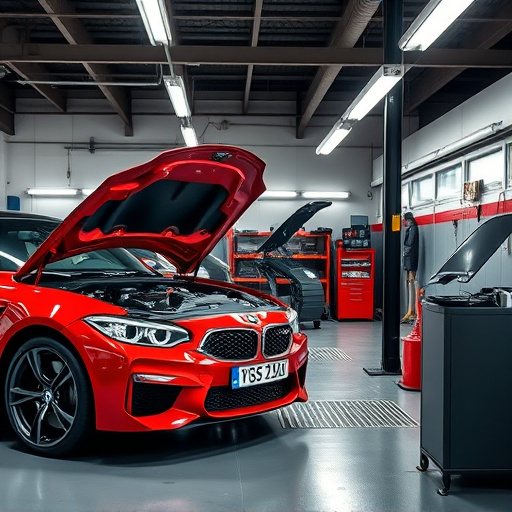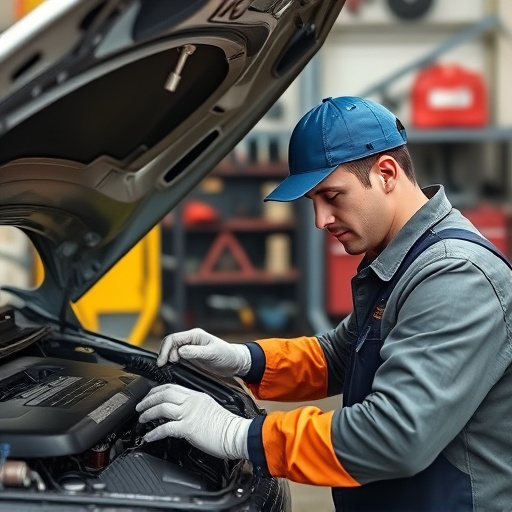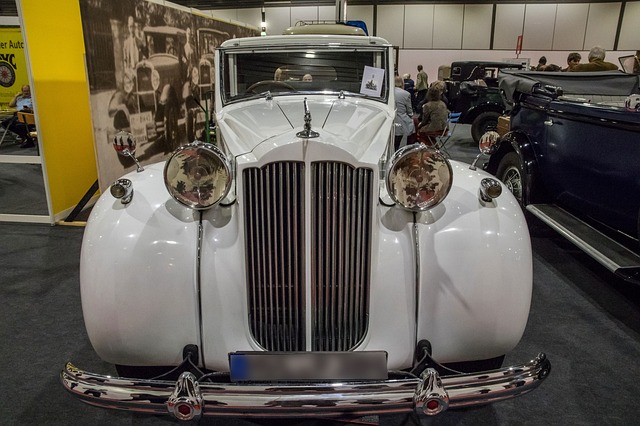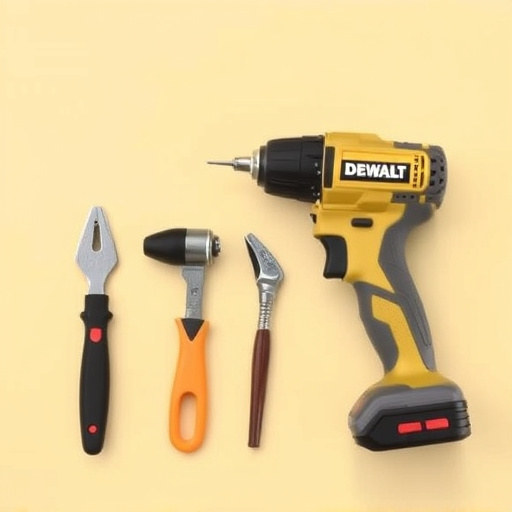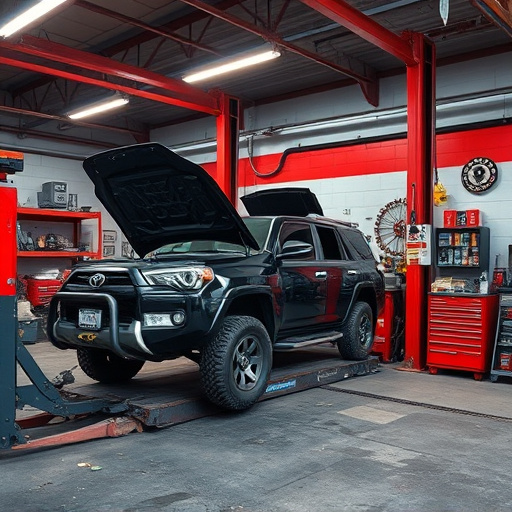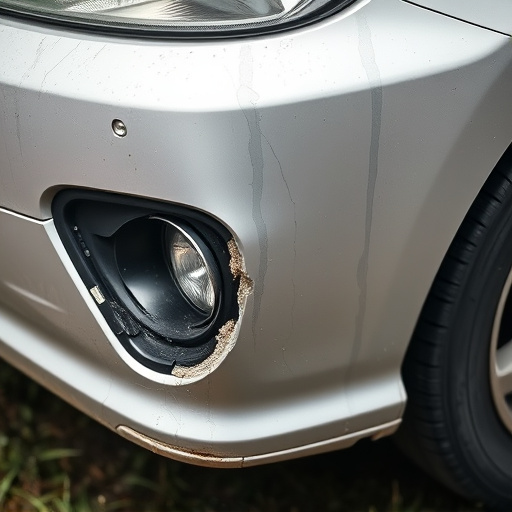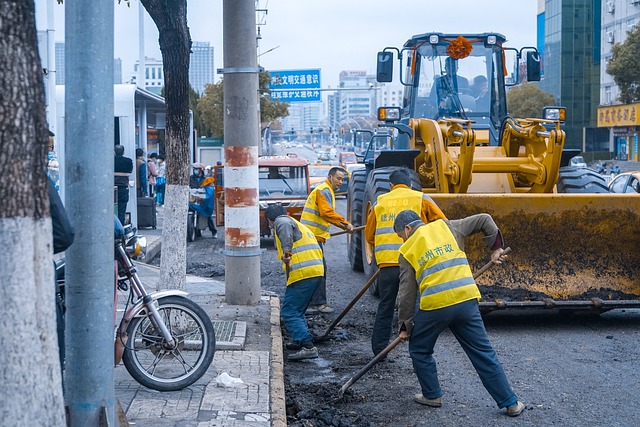The auto repair industry has evolved from labor-intensive traditional practices to advanced, technology-driven solutions. Domestic auto body repair, once reliant on skilled technicians, now benefits from digital innovation like computer diagnostics, modern welding techniques, and state-of-the-art paint systems. By 2025, AI, augmented reality (AR), and robotics will further streamline processes, ensuring domestic auto body repair remains relevant and top-notch. This transformation reflects our evolving relationship with vehicles, combining traditional craftsmanship with cutting-edge technology to restore cars to their original condition while incorporating modern safety features.
In an era dominated by advanced technology, the role of domestic auto body repair in 2025 is a topic of growing interest. While innovative repair technologies are transforming the industry, the art of manual labor and specialized skills remain indispensable. This article explores the evolution of auto repair, focusing on how domestic body shops adapt to stay relevant. We delve into the advantages they offer, from personalized service to their impact on local communities, emphasizing that traditional repairs still hold value in terms of safety, sustainability, and community engagement.
- The Evolution of Auto Repair Technology: Past, Present, and Future
- – A brief history of auto body repair
- – Current state of advanced repair technologies
The Evolution of Auto Repair Technology: Past, Present, and Future

The auto repair industry has witnessed a remarkable journey over the years, transforming from traditional, often labor-intensive practices to highly advanced, technology-driven processes. In the past, domestic auto body repair was a time-consuming art, relying heavily on skilled technicians and manual labor for even the simplest repairs. However, with technological advancements, the landscape of auto care has evolved dramatically.
Today, we see a fusion of digital innovation and traditional craftsmanship. Modern car repair shops now offer a wide array of services, including sophisticated computer diagnostics, advanced welding techniques, and state-of-the-art paint systems. For instance, tire services have become more efficient with the introduction of automated tire fitting machines, while scratch repairs can be virtually invisible thanks to modern filler and coating technologies. As we move forward into 2025, the future of auto repair promises even greater integration of AI, augmented reality (AR), and robotics, further streamlining processes like car bodywork and ensuring that domestic auto body repair remains relevant and top-notch.
– A brief history of auto body repair

The history of auto body repair is a reflection of our evolving relationship with vehicles. From the early days of horse-drawn carriages to the modern era of sophisticated automotive engineering, the need for skilled technicians has remained constant. Over time, domestic auto body repair has transformed from rudimentary fixes to highly specialized services, keeping pace with advancements in vehicle technology.
In the past, auto body repair was often a makeshift affair, with mechanics using whatever tools and materials were readily available. However, as vehicles became more complex, so did the repairs required. The introduction of safety standards, advanced materials like steel and fiberglass, and later, computer-aided design, has significantly influenced the practice of domestic auto body repair. Today, automotive collision repair involves intricate processes that demand expertise in both traditional craftsmanship and cutting-edge technology, ensuring vehicles are restored to their original condition or even enhanced with modern safety features.
– Current state of advanced repair technologies

The current landscape of domestic auto body repair is marked by a fusion of traditional skills and cutting-edge technologies. While many envision a future dominated by fully automated repair processes, the reality on the ground reveals a more nuanced picture. Advanced repair technologies, such as robotic welding and computer-aided design (CAD), are increasingly integrated into workshops, enhancing precision and efficiency. These innovations, when combined with the expertise of skilled technicians, enable faster turnaround times and superior quality in repairs.
Despite the allure of fully automated systems, human intervention remains indispensable. Mercedes Benz collision repair, for instance, often involves intricate panel alignment and complex paint repair, tasks that demand the dexterity and experience of a seasoned professional. Car body repair, in its essence, is an art that continues to evolve, ensuring that vehicles not only function optimally but also retain their aesthetic appeal. As we move forward into 2025, vehicle paint repair techniques will further refine, allowing for more vibrant finishes and enhanced durability, underscoring the enduring significance of domestic auto body repair in the ever-changing automotive industry.
Despite advancements in technology, domestic auto body repair remains vital in 2025. While autonomous vehicles and digital diagnostics are transforming the industry, personalized craftsmanship and human expertise will continue to play a significant role in ensuring quality repairs. The blend of traditional skill and innovative tools promises to deliver superior outcomes, catering to both modern and classic vehicle needs. Thus, domestic auto body repair shops remain indispensable, offering tailored solutions that go beyond mere mechanical fixes.
